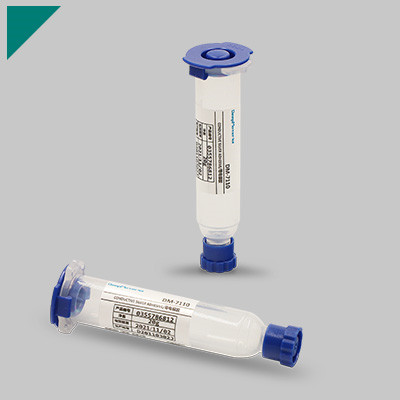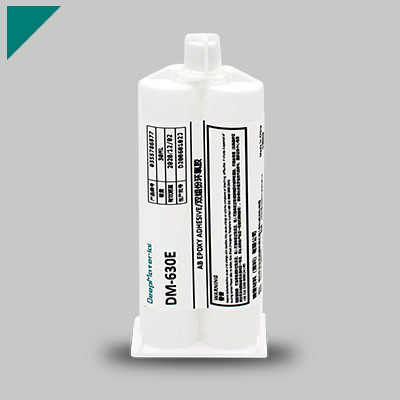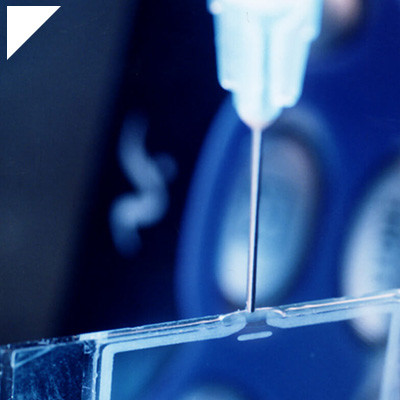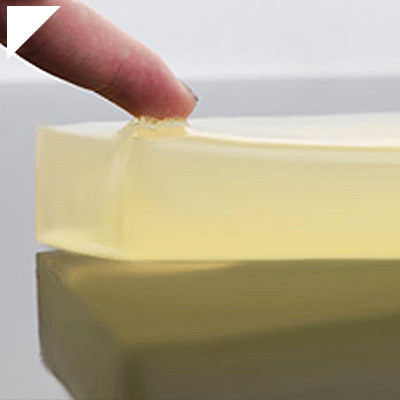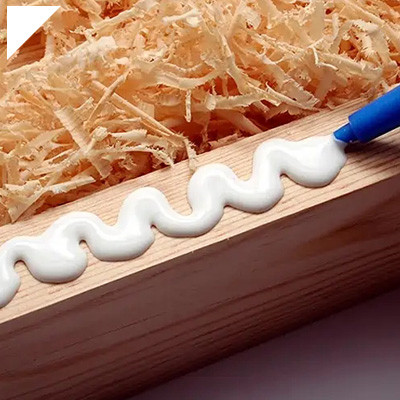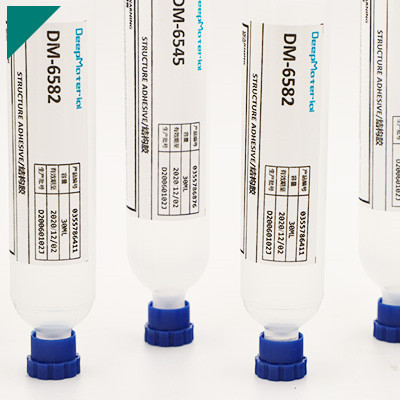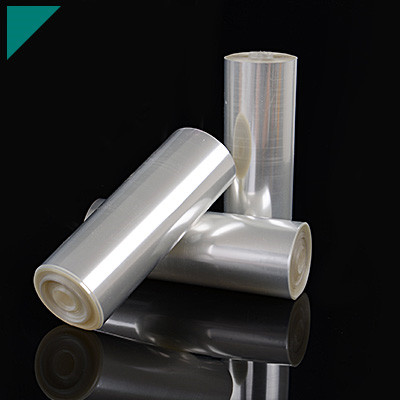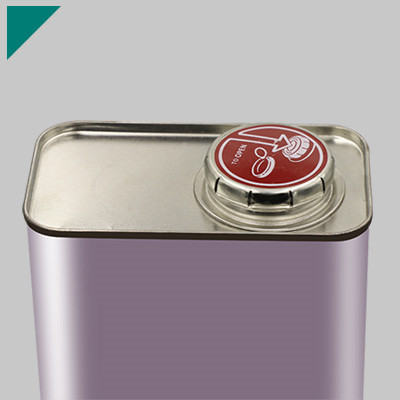- Home
- >
- Application
- >
- Photovoltaic Wind Energy Adhesive
Photovoltaic Wind Energy Adhesive

The paradigm of renewable energy is transforming with the advent of Photovoltaic Wind Energy Adhesive (PVEA), an innovative technology seamlessly integrating photovoltaic and wind energy components. This groundbreaking synergy holds immense promise for advancing renewable energy solutions, enhancing energy generation efficiency, and mitigating environmental impacts. As we delve into the multifaceted aspects of PVEA, from its working mechanisms to potential applications and economic implications, a comprehensive exploration awaits, unveiling the revolutionary potential embedded within this cutting-edge technology.
Table of Contents
ToggleWhat is Photovoltaic Wind Energy Adhesive?
Photovoltaic Wind Energy Adhesive, or PVEA, is a revolutionary technology that integrates solar and wind energy systems into a cohesive and synergistic unit. This adhesive seamlessly combines photovoltaic cells, which convert sunlight into electricity, with wind turbines that harness the wind’s kinetic energy. The significance of PVEA lies in its ability to address the intermittent nature of renewable energy sources by diversifying the avenues through which energy is captured. This integrated approach enhances energy production and reliability, making it a promising solution for a sustainable future.
Functionality of PVEA:
Photovoltaic Cells:
- PVEA incorporates advanced photovoltaic cells that efficiently convert sunlight into electricity.
- These cells are strategically placed on the surface to maximize exposure to daylight throughout the day.
Wind Turbines:
- Complementing the solar component, PVEA integrates compact and efficient wind turbines.
- These turbines are designed to capture wind energy, converting it into electricity through a generator.
Smart Control Systems:
- PVEA is equipped with intelligent control systems that optimize solar and wind energy utilization based on real-time conditions.
- The system adapts to weather patterns, ensuring a consistent and reliable energy output.
Combining Solar and Wind Energy Components:
Synergistic Energy Generation:
- PVEA maximizes energy production by combining solar and wind energy strengths.
- During periods of low sunlight, wind turbines contribute to the overall energy output and vice versa.
Enhanced Efficiency:
- Integrating solar and wind components creates a more balanced and reliable renewable energy system.
- The collaboration between these two sources minimizes the impact of energy fluctuations associated with individual systems.
How does PVEA work?
Understanding the mechanics behind PVEA is essential to appreciate its innovative approach to harnessing clean and renewable energy sources.
Integration of Photovoltaic Panels:
- PVEA employs advanced photovoltaic panels to capture sunlight and convert it into electrical energy.
- These panels are strategically integrated into the adhesive structure, ensuring maximum exposure to sunlight for optimal energy conversion.
Wind Turbine Integration:
- Complementing the photovoltaic panels, PVEA incorporates compact and efficient wind turbines.
- These turbines are strategically placed within the adhesive framework, designed to harness the kinetic energy from the wind.
Adhesive’s Role in Enhancing Synergy:
- PVEA’s adhesive is pivotal in seamlessly integrating photovoltaic panels and wind turbines into a cohesive unit.
- The adhesive provides structural support and facilitates the efficient transfer of energy between the two systems.
Flexible Design and Placement:
The adhesive’s flexibility allows for placing photovoltaic panels and wind turbines optimally.
This adaptability ensures that each component operates efficiently, maximizing overall energy production.
Weather-Adaptive Mechanism:
PVEA has an intelligent control system that responds to real-time weather conditions.
During periods of low sunlight, the wind turbines are activated to compensate for the reduced solar energy production, showcasing the adaptive nature of the technology.
Enhanced Efficiency through Synergy:
What are the benefits of PVEA?
Photovoltaic Wind Energy Adhesive, with its multifaceted advantages, emerges as a transformative technology shaping the future of renewable energy. Its ability to increase energy production, optimize land-use efficiency, ensure cost-effectiveness, promote environmental sustainability, and offer reliability positions PVEA as a promising and impactful solution in the ongoing global transition to cleaner and more sustainable energy sources.
Increased Energy Production:
- PVEA leverages the combination of solar and wind energy, ensuring a consistent and reliable power output.
- Wind turbines compensate for reduced solar energy during low sunlight, leading to enhanced overall energy production.
- The synergy between these two renewable sources results in a high-efficiency solution, making PVEA an influential contributor to the renewable energy landscape.
Optimized Land-Use Efficiency:
- PVEA’s design is tailored for efficient land use, integrating photovoltaic panels and wind turbines into a cohesive structure.
- The vertical orientation of wind turbines within the adhesive framework maximizes space utilization.
- PVEA’s adaptability allows it to be deployed on diverse terrains, including urban and rural settings, optimizing land resources for sustainable energy generation.
Cost-Effectiveness:
- PVEA streamlines the deployment of renewable energy infrastructure by combining two systems into a single unit.
- Compared to separate solar and wind installations, the integrated design reduces manufacturing and installation costs.
- Shared infrastructure and adaptive control systems contribute to long-term cost savings, making PVEA an economically viable choice for sustainable energy projects.
Environmental Sustainability:
- PVEA significantly reduces reliance on fossil fuels, which is crucial in mitigating greenhouse gas emissions and supporting environmental sustainability.
- By harnessing renewable energy sources, PVEA aligns with global efforts to combat climate change and transition to cleaner energy alternatives.
Reliability and Adaptability:
- PVEA’s intelligent control systems enhance adaptability to changing weather conditions, ensuring a continuous and reliable energy supply.
- The cohesive integration of components within the adhesive framework enhances the system’s durability and resilience, contributing to a reliable energy infrastructure.
- PVEA’s reliability makes it well-suited for various environmental conditions, enhancing its effectiveness as a sustainable energy solution.
What are the challenges in implementing PVEA?
Addressing these challenges is paramount for successfully integrating Photovoltaic Wind Energy Adhesive into the mainstream energy landscape. Collaborative efforts involving technology developers, policymakers, regulatory bodies, and the public are crucial to overcoming these hurdles and unlocking the full potential of PVEA as a sustainable energy solution.
Technological Limitations:
- PVEA, being a relatively new technology, may face technological limitations that could affect its widespread adoption.
- The efficiency and durability of photovoltaic cells and wind turbines integrated into the adhesive framework may need further advancements to optimize energy production.
- Ongoing research and development efforts are essential to address any technical challenges and enhance the overall performance of PVEA.
Installation Complexities:
- The installation of PVEA systems may pose challenges due to integrating photovoltaic panels and wind turbines within a single adhesive framework.
- Coordinating the placement of these components to maximize energy capture while ensuring structural integrity could require specialized expertise and careful planning.
- Addressing installation complexities is crucial to make PVEA accessible and feasible for a wide range of deployment scenarios.
Regulatory Aspects:
- Regulatory hurdles can impede the widespread adoption of PVEA, as energy policies and standards may have yet to catch up with the unique characteristics of this technology.
- Clear guidelines and regulations must govern the deployment, maintenance, and safety aspects of PVEA installations.
- Collaboration between industry stakeholders, policymakers, and regulatory bodies is essential to create a conducive environment for integrating PVEA into existing energy infrastructures.
Cost Considerations:
- While PVEA offers long-term cost-effectiveness, initial costs may pose a challenge, especially compared to traditional energy sources.
- Investments in research, development, and manufacturing processes are necessary to bring down the production costs of PVEA components.
- Financial incentives and supportive policies could make PVEA more economically viable for various applications.
Public Awareness and Acceptance:
- The general public’s unfamiliarity with PVEA may lead to skepticism or resistance.
- Educating communities about the benefits and safety aspects of PVEA is crucial for fostering public acceptance.
- Building awareness and garnering support for this innovative technology can help overcome resistance and encourage widespread adoption.
How does PVEA impact renewable energy generation?
Enhanced Energy Output:
- PVEA significantly contributes to increased renewable energy generation by harnessing solar and wind energy.
- The photovoltaic panels generate electricity during abundant sunlight, while wind turbines compensate for energy production during low-light or nighttime conditions.
- The synergy between these two sources ensures a more consistent and reliable energy output than individual solar or wind installations.
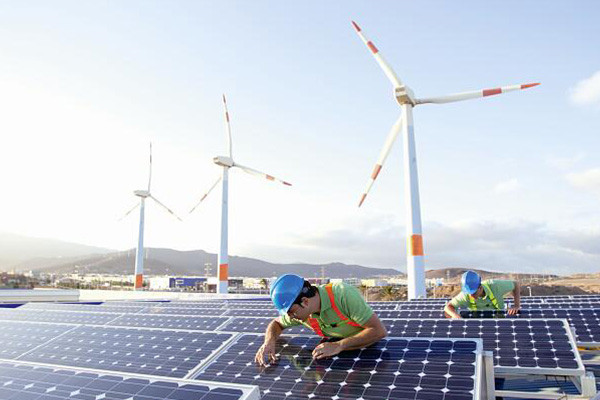
Diversification of Energy Sources:
- PVEA introduces a diversified approach to renewable energy generation by combining two distinct sources into a single cohesive unit.
- This diversification helps mitigate the intermittent nature of renewable energy, providing a stable and continuous power supply.
- The adaptability of PVEA to various weather conditions ensures that energy production remains consistent, contributing to the reliability of the overall renewable energy grid.
Optimized Land Utilization:
- The integrated design of PVEA optimizes land use, enabling the installation of renewable energy infrastructure in diverse environments.
- The vertical orientation of wind turbines within the adhesive framework maximizes space utilization, making PVEA suitable for both urban and rural settings.
- This versatility allows for deploying PVEA in areas with limited available space, expanding the reach of renewable energy generation.
Reduction in Carbon Footprint:
- PVEA plays a crucial role in reducing the carbon footprint associated with energy production by relying on clean and renewable sources.
- Integrating solar and wind components promotes a greener energy generation process, mitigating environmental impact and supporting sustainability goals.
- As a result, PVEA contributes to global efforts to combat climate change and transition towards a more environmentally friendly energy landscape.
Cost-Effective Renewable Energy Solution:
- PVEA’s integrated design streamlines the deployment of renewable energy infrastructure, offering a cost-effective solution compared to separate solar and wind installations.
- The shared infrastructure and adaptive control systems contribute to long-term cost savings, making PVEA an economically viable choice for sustainable energy projects.
- By combining two systems into one, PVEA enhances the overall cost-effectiveness of renewable energy generation.
Global Energy Demands:
- PVEA addresses the increasing global demand for sustainable energy by providing a versatile and efficient solution.
- Its ability to harness energy from multiple sources ensures a more resilient energy grid capable of meeting the growing needs of a burgeoning global population.
- PVEA exemplifies a step towards a sustainable future, where innovative technologies contribute to transitioning away from conventional energy sources.
Are there environmental benefits to PVEA?
Environmental Benefits of PVEA:
Photovoltaic Wind Energy Adhesive offers numerous environmental benefits, including a reduced carbon footprint, conservation of natural resources, energy independence, minimal environmental disruption during installation, improved air and water quality, and long-term ecological stability. As the world strives for a sustainable future, PVEA emerges as a pivotal technology with the potential to significantly contribute to environmental conservation and mitigate the impacts of climate change.
Reduced Carbon Footprint:
- One of the significant environmental benefits of PVEA is the substantial reduction in carbon footprint associated with energy generation.
- By harnessing solar and wind energy, PVEA eliminates the need for traditional fossil fuel-based power generation, lowering greenhouse gas emissions.
- The transition to cleaner energy sources aligns with global initiatives to combat climate change and reduce the environmental impact of energy production.
Conservation of Natural Resources:
- PVEA contributes to the conservation of natural resources by tapping into renewable energy sources that are abundant and sustainable.
- Using sunlight and wind, which are naturally occurring and replenishable, minimizes the depletion of finite resources like fossil fuels.
- This sustainable approach ensures the preservation of natural ecosystems and biodiversity, fostering a more balanced and resilient environment.
Energy Independence:
- PVEA enhances environmental sustainability by promoting energy independence and reducing reliance on non-renewable resources.
- The technology harnesses energy from sources not subject to depletion, providing a consistent and reliable power supply without compromising the environment.
- Decreasing dependence on finite resources contributes to the long-term health of ecosystems and reduces the environmental impact associated with resource extraction.
Minimal Environmental Disruption:
- Unlike conventional energy extraction methods, such as fossil fuel mining or hydraulic fracturing, PVEA installations have a minimal impact on the surrounding environment.
- The adhesive framework allows for integrating renewable energy components without extensive land disruption or habitat destruction.
- PVEA’s low environmental footprint during installation and operation enhances its overall positive contribution to environmental conservation.
Air and Water Quality Improvement:
- PVEA indirectly improves air and water quality by displacing traditional energy sources that release pollutants into the atmosphere and waterways.
- With no emissions during energy generation, PVEA helps mitigate air pollution, improving air quality.
- Additionally, by reducing the demand for water-intensive energy production methods, PVEA supports water conservation efforts.
Long-Term Ecological Stability:
- The adoption of PVEA fosters long-term ecological stability by mitigating the adverse effects of climate change.
- Reduced carbon emissions contribute to global efforts to curb rising temperatures, preserve ecosystems, and prevent biodiversity loss.
- PVEA’s positive impact on the environment extends beyond immediate benefits, playing a role in building a more sustainable and resilient planet for future generations.
What are the applications of PVEA?
Photovoltaic Wind Energy Adhesive (PVEA) applications span commercial, residential, and industrial sectors, contributing to the widespread adoption of solar energy. As technology advances, the potential future uses of PVEA are likely to expand, ushering in innovative and sustainable solutions in the field of renewable power.
Commercial Sector:
- Roof-Integrated Solar Panels:PVEA finds extensive use in the commercial sector for roof-integrated solar panels. Adhesives play a crucial role in affixing photovoltaic cells to roofing materials without compromising the structural integrity of the building. This application generates clean energy and provides an aesthetically pleasing and space-efficient solution.
Building-Integrated Photovoltaics (BIPV): In Building-Integrated Photovoltaic (BIPV) systems, PVEA plays a crucial role by seamlessly integrating solar panels into the architecture of commercial buildings. This integration allows the solar panels to serve a dual purpose, acting both as a building envelope and a source of electricity. The adhesive properties of PVEA ensure a secure and durable bond between the solar panels and the building surfaces.
Residential Sector:
- Solar Shingles:PVEA is commonly used to install solar shingles in residential settings. These innovative roofing materials incorporate photovoltaic cells; adhesives are vital in securely attaching these shingles to the roof. This application enables homeowners to harness solar energy without the need for traditional solar panels, enhancing the visual appeal of their homes.
- Window-Integrated Solar Films:PVEA is also applied in window-integrated solar films, providing homeowners a discreet and efficient way to generate solar power. Adhesives ensure a seamless attachment of the thin film solar cells to windows, allowing residents to harness sunlight while maintaining a clear view.
Industrial Sector:
- Large-Scale Solar Farms: PVEA is indispensable in constructing large-scale solar farms. The adhesive properties are critical in securing solar panels to the mounting structures, ensuring durability and longevity in challenging environmental conditions. The efficiency of these adhesive applications contributes to the overall success of industrial solar energy projects.
- Transportation Sector:In the industrial realm, PVEA increasingly finds applications in the transportation sector. Adhesives are used to affix photovoltaic panels to electric vehicles, offering a sustainable solution to enhance the range and efficiency of electric transportation.
Potential Future Uses:
- Floating Solar Arrays: PVEA holds promise for future applications in floating solar arrays. As the demand for renewable energy rises, utilizing large bodies of water for solar installations becomes attractive. Adhesives will play a pivotal role in ensuring the stability and longevity of solar panels in floating platforms.
- Flexible Photovoltaics: Developing flexible photovoltaic materials opens up new possibilities for PVEA. Adhesives can be tailored to adhere to various surfaces, including flexible substrates, enabling the integration of solar technology into unconventional spaces and structures.
What advancements are being made in PVEA technology?
Ongoing research, material innovations, and improvements in application techniques characterize Photovoltaic Wind Energy Adhesive (PVEA). The evolution of PVEA technology showcases a commitment to enhancing solar energy systems’ efficiency, durability, and sustainability. As advancements continue, the potential for future enhancements holds promise for a more robust and widespread adoption of renewable energy solutions.
Ongoing Research:
- Enhanced Durability: Current research in PVEA focuses on improving the durability of adhesives under various environmental conditions. Scientists are exploring novel formulations that resist degradation from UV radiation, extreme temperatures, and moisture, ensuring a longer lifespan for solar installations.
- Nano-Technological Integration: Advances in nanotechnology are playing a crucial role in PVEA development. Researchers are incorporating nanomaterials into adhesives to enhance their strength, conductivity, and flexibility. These nano-enhanced adhesives contribute to the overall efficiency and performance of photovoltaic systems.
Innovations in Materials:
- Bio-Based Adhesives:In line with the global push towards sustainability, there is a growing focus on developing bio-based adhesives for PVEA. Researchers are exploring materials derived from renewable sources, such as plant-based polymers, to create adhesives that are environmentally friendly and exhibit impressive bonding capabilities.
- Self-Healing Adhesives:The concept of self-healing adhesives is gaining traction in PVEA research. Scientists are working on adhesives that can autonomously repair small cracks or damage, extending the operational life of solar installations and reducing maintenance costs over time.
Improvements in Application Techniques:
- Automated Application Processes: Advancements in automation are streamlining the application of PVEA. Automated processes ensure precise and consistent application of adhesives, reducing the margin of error and improving the overall efficiency of solar panel installations.
- Customizable Adhesive Solutions: PVEA technology is becoming more customizable to meet specific project requirements. Adhesive formulations can be tailored to adhere to various surfaces, ensuring compatibility with diverse solar panel designs and mounting structures.
Potential for Future Enhancements:
- Thermal Management: Future enhancements in PVEA may focus on improving thermal management properties, including developing adhesives with better heat dissipation capabilities to ensure optimal performance of solar panels in high-temperature environments.
- Integration with Smart Technologies:PVEA is expected to integrate innovative technologies to improve monitoring and maintenance. This integration may involve the creation of adhesives with built-in sensors, which can provide real-time information on the condition of solar panels. Enabling proactive maintenance and troubleshooting will help prevent issues before they occur and resolve them quickly.
How efficient is PVEA compared to traditional energy sources?
PVEA Efficiency:
- High Conversion Rates:One of the primary advantages of PVEA is its high efficiency in converting sunlight into electricity. Photovoltaic systems with advanced adhesives can achieve conversion rates ranging from 15% to 22%, depending on the technology used. This efficiency is particularly notable in regions with abundant sunlight, where solar energy can be harnessed effectively.
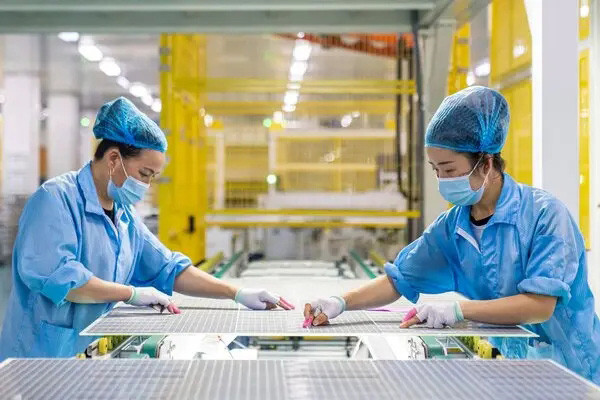
- Consistent Technological Improvements:Ongoing advancements in PVEA technology contribute to continuous improvements in efficiency. Research focuses on optimizing adhesive formulations, enhancing photovoltaic cell design, and incorporating innovative materials, all aimed at boosting the overall performance of solar energy systems.
Reliability:
- Low Maintenance Requirements:PVEA systems exhibit high reliability due to minimal maintenance requirements; solar panels with well-adhered photovoltaic cells typically require minimal attention once installed. The absence of moving parts reduces the risk of mechanical failures, contributing to the long-term reliability of solar installations.
- Durability in Diverse Environments:PVEA’s reliability is further demonstrated by its durability in various environmental conditions. Modern adhesives are designed to withstand extreme temperatures, UV radiation, and moisture, ensuring the stability of the solar panels over an extended period.
Cost-Effectiveness:
- Falling Costs of Photovoltaic Technology:The cost-effectiveness of PVEA has improved significantly over the years, driven by the decreasing costs of photovoltaic technology. Advances in manufacturing processes, economies of scale, and increased competition have contributed to a substantial reduction in the cost of solar panels, making PVEA a competitive option in the energy market.
- Long-Term Economic Benefits:While the initial investment in PVEA systems may be higher than traditional energy sources, the long-term economic benefits are considerable. Solar installations have a longer lifespan, and the absence of fuel costs and minimal maintenance expenses make PVEA a financially sound choice in sustainable energy production.
Comparison with Traditional Energy Sources:
- Environmental Impact:PVEA stands out for its minimal environmental impact compared to traditional energy sources like coal, oil, and natural gas. Solar energy production generates no greenhouse gas emissions during operation, contributing to efforts to reduce carbon footprints and combat climate change.
- Resource Dependence: Unlike fossil fuels, PVEA relies on an abundant and renewable resource – sunlight. This reliance on sunlight reduces dependence on finite fossil fuel reserves, mitigating concerns related to resource depletion and geopolitical tensions associated with traditional energy sources.
What role does adhesive technology play in PVEA’s success?
Photovoltaic Wind Energy Adhesive (PVEA) has emerged as a groundbreaking technology combining photovoltaic and wind energy systems. Adhesive technology plays a pivotal role in ensuring the success of PVEA, contributing significantly to its functionality, durability, and long-term performance. The synergy between these elements is crucial for the efficiency and sustainability of this innovative energy solution.
Functionality:
- Bonding Solar and Wind Components:Adhesive technology is the backbone for securely clicking solar panels and wind turbine components in PVEA systems. These adhesives must withstand various environmental conditions, ensuring a robust connection between elements.
- Electrical Connectivity:Adhesives facilitate the seamless integration of electrical components within PVEA systems. They provide a conductive interface, enabling efficient electricity transmission between the photovoltaic panels and wind turbines. This connectivity is essential for harnessing and optimizing the combined energy output.
- Flexibility and Adaptability:Adhesives used in PVEA must offer flexibility and adaptability to accommodate the dynamic nature of renewable energy systems. As these systems respond to changing weather conditions, the adhesive technology ensures that the components remain securely attached, preventing potential damage and maintaining optimal functionality.
Durability:
- Weather Resistance:PVEA installations are exposed to diverse weather conditions, including extreme temperatures, high winds, and precipitation. Adhesives with superior weather resistance properties are crucial for preventing deterioration and ensuring the longevity of the solar and wind components.
- Corrosion Protection:Adhesive technology contributes to the corrosion resistance of PVEA systems. By forming a protective barrier, these adhesives shield critical components from corrosive elements, extending the lifespan of the overall system and reducing maintenance requirements.
- Vibration Damping:The dynamic nature of wind turbine operation introduces vibrations that can impact the structural integrity of PVEA components. Adhesives with vibration-damping properties absorb and dissipate these vibrations, preventing potential damage and maintaining the durability of the entire system.
Long-term Performance:
- Adhesive Lifespan:The longevity of the adhesive used in PVEA directly influences the system’s overall performance. High-quality adhesives with a long lifespan contribute to sustained structural integrity, ensuring that the solar and wind components remain securely attached over the system’s operational life.
- Maintenance Reduction:Reliable adhesive technology minimizes the need for frequent maintenance and repairs, thereby enhancing the long-term performance of PVEA systems through reduced downtime and associated costs.
Are there safety considerations with PVEA?
Ensuring the safety of PVEA systems involves a comprehensive approach that addresses electrical, structural, and environmental considerations. By implementing safety measures, identifying potential risks, and taking necessary precautions, the installation and operation of PVEA systems can be conducted with a focus on protecting both personnel and the environment.
Safety Measures:
- Electrical Safety: One primary safety consideration with PVEA systems involves electrical components. Adequate insulation and proper grounding are crucial to prevent electrical shocks and ensure the safety of installation and maintenance personnel. Implementing safety protocols, such as lockout/tagout procedures, helps mitigate electrical risks during maintenance activities.
- Structural Integrity:As PVEA systems often involve installing solar panels and wind turbines in various locations, ensuring the structural integrity of supporting structures is vital. Regular inspections and adherence to engineering standards help prevent structural failures that could pose safety hazards to nearby personnel or structures.
- Fall Protection:Installations on rooftops or elevated platforms necessitate robust fall protection measures. Workers involved in installing and maintaining PVEA components should use appropriate personal protective equipment (PPE), including harnesses and lanyards, to prevent falls and injuries.
Potential Risks:
- Fire Hazards:Photovoltaic components can generate heat; when combined with electrical systems, there is a potential fire hazard. Adequate spacing, proper ventilation, and fire-resistant materials in the construction of PVEA installations help minimize the risk of fires.
- Chemical Exposure:Adhesives used in PVEA systems may contain chemicals that pose health risks upon exposure. Implementing proper handling procedures, providing adequate training to personnel, and ensuring the use of personal protective equipment can mitigate these risks.
- Environmental Impact:While PVEA systems contribute to sustainable energy production, the manufacturing and disposal of photovoltaic components raise ecological concerns. Implementing environmentally friendly practices, such as recycling and proper waste disposal, helps mitigate the environmental impact of PVEA systems.
Precautions:
- Training and Certification:Adequate training and certification of personnel involved in installing, operating, and maintaining PVEA systems are essential. Training should encompass safety protocols, emergency procedures, and the proper use of PPE to minimize the risk of accidents.
- Regular Inspections:Routine inspections of PVEA components ensure potential issues are identified and addressed promptly. This proactive approach helps prevent system malfunctions that could lead to safety hazards.
- Emergency Response Planning:Developing and implementing an emergency response plan specific to PVEA systems is crucial. This plan should outline procedures for dealing with electrical malfunctions, fires, or other unforeseen events to minimize the impact on personnel and the surrounding environment.
How scalable is PVEA technology?
Photovoltaic Wind Energy Adhesive (PVEA) technology has emerged as a promising solution in the renewable energy sector, aiming to harness the combined power of photovoltaic and wind energy while utilizing advanced adhesives for efficient integration. The critical question in the realm of PVEA technology is its scalability – the ability to transition seamlessly from small-scale applications to large-scale installations. In this evaluation, we will delve into the adaptability of PVEA technology and its potential global impact.
Scalability Overview:
- Small-Scale Applications:PVEA technology exhibits notable scalability at the small-scale level, making it a viable option for residential and community-based renewable energy solutions. The modular nature of photovoltaic and wind energy components, along with the adhesive integration, allows for flexibility in design and installation. This adaptability ensures that PVEA systems can efficiently cater to the energy needs of individual households or small communities.
- Medium-Scale Deployments:Its scalability remains evident as PVEA technology progresses towards medium-scale applications, such as commercial buildings or local power grids. The adhesive bonding of photovoltaic and wind elements offers a streamlined integration approach, reducing installation time and costs. This characteristic makes PVEA a practical choice for businesses and communities seeking sustainable energy solutions on a larger scale.
- Large-Scale Installations:PVEA’s scalability is particularly noteworthy when considering large-scale implementations, such as utility-scale solar and wind farms. The adhesive technology ensures robust connections between solar panels and wind turbines, enhancing the system’s overall efficiency. PVEA’s ability to seamlessly scale up to meet the energy demands of entire regions or countries positions it as a competitive player in the renewable energy landscape.
Adaptability:
- Geographical Variability:PVEA technology demonstrates adaptability to various geographical conditions. Whether deployed in sunny or windy regions, the integrated system effectively captures and converts renewable energy. This adaptability enhances its global relevance, allowing PVEA to contribute significantly to sustainable energy solutions across diverse climates.
Potential Global Impact:
The scalability and adaptability of PVEA technology underscore its potential to make a substantial global impact on the renewable energy landscape. From addressing local energy needs to contributing to large-scale clean energy initiatives, PVEA stands as a versatile and promising technology with the capacity to shape a more sustainable future.
What economic implications does PVEA have?
The deployment of Photovoltaic Wind Energy Adhesive (PVEA) technology holds significant promise in sustainable energy and shaping economic landscapes. This exploration delves into the financial implications of PVEA, analyzing its viability, potential cost savings, and the investment opportunities it presents.
Economic Viability:
- Reduced Energy Costs:One of the primary economic advantages of PVEA lies in its potential to reduce energy costs. By harnessing both photovoltaic and wind energy, PVEA systems offer a diversified and consistent power supply, mitigating the dependency on traditional energy sources. This diversification stabilizes energy costs and contributes to long-term economic sustainability.
- Job Creation:Deploying PVEA technology necessitates skilled labor for manufacturing, installation, and maintenance. This requirement creates job opportunities within the renewable energy sector, fostering economic growth and contributing to developing a skilled workforce. As PVEA gains traction, the associated job market could see a notable boost.
Potential Cost Savings:
- Installation Efficiency:The adhesive technology employed in PVEA systems streamlines the installation process. This efficiency not only reduces labor costs but also accelerates the deployment timeline. The ease of installation contributes to overall cost savings, making PVEA an attractive option for small-scale and large-scale projects.
- Maintenance and Longevity:Adhesive bonding in PVEA systems simplifies installation, enhances durability, and reduces maintenance requirements. The longevity of the adhesive bonds ensures a more extended operational life for the entire system, leading to reduced maintenance costs over time and bolstering the economic viability of PVEA.
Investment Opportunities:
- Renewable Energy Investments:PVEA presents lucrative investment opportunities within the renewable energy sector. As governments and businesses globally prioritize sustainable practices, investors are increasingly drawn to technologies that offer both environmental benefits and economic returns. PVEA, with its dual energy generation approach and cost-efficiency, becomes an attractive option for investors seeking sustainable and profitable ventures.
- Technological Advancements:Ongoing research and development in PVEA technology are opening avenues for innovation and market growth, as investments in research can lead to advancements in adhesive formulations, energy storage technologies, and system optimization. These developments create opportunities for investors to capitalize on emerging trends in the renewable energy landscape.
How does PVEA contribute to energy independence?
Photovoltaic Wind Energy Adhesive (PVEA) represents a groundbreaking approach to harnessing renewable energy sources. As we navigate the challenges of a rapidly changing climate, the quest for energy independence becomes increasingly vital. PVEA emerges as a critical player in this quest, offering a sustainable solution that mitigates environmental impact and fosters energy self-sufficiency.
Diversification of Energy Sources:
PVEA integrates photovoltaic and wind energy technologies, creating a diversified energy portfolio. This diversification reduces dependence on a single energy source, minimizing vulnerability to supply disruptions.
Reduced Reliance on Fossil Fuels:
By harnessing the power of sunlight and wind, PVEA significantly diminishes the need for traditional fossil fuels. Reducing reliance on non-renewable resources helps mitigate the environmental impact of extraction, transportation, and combustion of fossil fuels.
Localized Energy Production:
PVEA systems can be implemented at various scales, from individual households to entire communities. This localized energy production model reduces the need for extensive energy transportation networks, making regions less dependent on centralized energy grids.
Enhanced Resilience:
PVEA contributes to energy independence by enhancing resilience against natural disasters and geopolitical uncertainties. Localized renewable energy systems are less susceptible to large-scale disruptions, ensuring a more reliable and stable energy supply.
Economic Empowerment:
Implementing PVEA projects empowers communities economically. Developing, installing, and maintaining photovoltaic and wind energy systems create job opportunities, fostering local economic growth and reducing dependence on external energy providers.
Technological Advancements:
PVEA encourages advancements in renewable energy technologies, fostering innovation and creating a more robust, self-sustaining energy infrastructure. This technological progress contributes to long-term energy independence by continually improving the efficiency and affordability of renewable energy solutions.
What are the future prospects of PVEA?
The realm of renewable energy is continually evolving, and the prospects of Photovoltaic Wind Energy Adhesive (PVEA) hold promise for transformative changes in the renewable energy landscape. As we envision the future, PVEA stands as a beacon of innovation, poised to play a pivotal role in shaping the trajectory of sustainable energy.

Envisioning the Future of PVEA:
Technological Advancements:
PVEA is likely to witness substantial technological advancements, leading to increased efficiency and affordability. Ongoing research and development efforts are expected to refine the integration of photovoltaic and wind energy technologies, optimizing energy capture and conversion.
Increased Integration with Smart Grids:
The future of PVEA is closely tied to the integration of smart grids. Advanced communication and control systems will enable seamless interaction between PVEA installations and the grid, allowing efficient energy distribution, storage, and management.
Enhanced Energy Storage Solutions:
Energy storage is a critical aspect of renewable energy systems. Future developments in PVEA may involve breakthroughs in energy storage technologies, such as advanced batteries and innovative storage materials, ensuring a steady and reliable energy supply even during low sunlight or wind.
Market Trends and Adoption:
As PVEA technology matures, increased adoption is anticipated across various sectors. The declining costs associated with photovoltaic and wind energy technologies and growing environmental consciousness are expected to drive market trends favoring the widespread implementation of PVEA systems.
Urban Integration and Aesthetics:
Future PVEA designs may focus on seamlessly integrating renewable energy solutions into urban landscapes. Aesthetically pleasing and architecturally integrated PVEA installations can facilitate greater acceptance and adoption, especially in urban environments where space constraints and aesthetic considerations are paramount.
Global Impact and Energy Equity:
PVEA has the potential to contribute significantly to global energy equity. As the technology becomes more accessible and affordable, developing nations can leverage PVEA to leapfrog traditional energy infrastructure, promoting sustainability and reducing energy poverty.
Research and Innovation Hubs:
Research and innovation hubs dedicated to PVEA will likely emerge, fostering collaboration between scientists, engineers, and industry experts. These hubs will accelerate innovation, driving continuous improvements in PVEA technology.
What are the current market trends for PVEA?
Photovoltaic Wind Energy Adhesive (PVEA) plays a crucial role in the renewable energy sector, serving as a critical component in installing and maintaining photovoltaic and wind energy systems. As the world increasingly embraces sustainable energy solutions, understanding the current market trends for PVEA becomes essential. This analysis explores market growth, demand, and industry forecasts for PVEA while considering the factors influencing its adoption.
Current Market Trends for PVEA:
Rapid Growth in Renewable Energy Projects:
The global shift towards renewable energy sources has led to a surge in photovoltaic and wind energy projects, consequently driving the demand for PVEA.
Technological Advancements:
Ongoing advancements in adhesive technologies have resulted in the development of more efficient and durable PVEA formulations, enhancing renewable energy installations’ overall performance and longevity.
Increasing Government Support:
Governments worldwide actively support renewable energy initiatives through subsidies and incentives, positively impacting the demand for PVEA in photovoltaic and wind energy applications.
Growing Environmental Awareness:
Rising environmental consciousness among consumers and corporations fuels the adoption of clean energy solutions, contributing to the escalating demand for PVEA in sustainable energy projects.
Market Expansion in Developing Regions:
Emerging economies are witnessing a surge in renewable energy investments, creating new opportunities for PVEA manufacturers and suppliers to expand their market presence globally.
Collaborations and Partnerships:
Industry players are increasingly engaging in collaborations and partnerships to enhance research and development efforts, resulting in innovative PVEA solutions catering to the evolving needs of the renewable energy sector.
What are the key players in PVEA development?
Photovoltaic Wind Energy Adhesive (PVEA) technology is at the forefront of renewable energy innovation, combining the power of photovoltaic cells with the efficiency of wind energy harnessing. As the world seeks sustainable alternatives to traditional energy sources, PVEA has emerged as a promising solution. In this dynamic landscape, critical players in PVEA development play a pivotal role in driving advancements and shaping the future of clean energy.
Leading Companies:
- Tesla:Renowned for its innovative approach to energy solutions, Tesla has been a significant player in PVEA development. The company’s commitment to advancing solar technology aligns seamlessly with the goals of PVEA, making it a driving force in the industry.
- Siemens Gamesa:A global leader in wind energy, Siemens Gamesa has actively integrated photovoltaic technology into its wind turbines. Their expertise in wind and solar technologies positions them as a critical player in pushing the boundaries of PVEA.
- First Solar:Specializing in thin-film solar modules, First Solar has made significant strides in PVEA technology. The company’s focus on efficiency and sustainability has placed it among the frontrunners in developing integrated solutions.
Research Institutions:
- National Renewable Energy Laboratory (NREL):NREL plays a crucial role in PVEA research, conducting studies to enhance the performance and reliability of integrated systems. Their collaborative efforts with industry partners contribute to the overall growth of PVEA technology.
- Fraunhofer Institute for Solar Energy Systems:A leading research institution in solar energy, Fraunhofer is actively exploring the potential of PVEA. Their interdisciplinary research approach fosters innovation and drives the integration of photovoltaic and wind energy technologies.
Innovators:
- SolarWind Innovations:This startup has gained attention for pioneering work developing adhesive technologies that seamlessly integrate photovoltaic cells onto wind turbine surfaces. Their innovative solutions hold promise for the widespread adoption of PVEA.
How does PVEA contribute to sustainable development goals?
Photovoltaic Wind Energy Adhesive (PVEA) represents a transformative approach to renewable energy, seamlessly merging the capabilities of photovoltaic and wind energy technologies. As the world grapples with the urgent need to address climate change and achieve sustainable development, examining PVEA’s alignment with global sustainability goals becomes paramount. This exploration delves into how PVEA contributes to crucial objectives such as reducing carbon emissions and promoting clean energy.
Reducing Carbon Emissions:
- Integration of Clean Energy Sources:PVEA facilitates the simultaneous harnessing of solar and wind energy, creating a synergistic effect that significantly reduces the reliance on conventional fossil fuels. This integration helps mitigate carbon emissions, a key contributor to climate change.
- Energy Production with Minimal Environmental Impact:PVEA minimizes the need for additional land and resources by using existing wind turbine infrastructure to incorporate photovoltaic cells. This innovative approach promotes sustainable energy production without causing further environmental strain.
Promoting Clean Energy:
- Diversification of Renewable Energy Sources: PVEA contributes to diversifying clean energy sources, reducing dependence on a single technology. This diversification enhances energy security and resilience, fostering a more sustainable and reliable energy landscape.
- Efficient Land Use: Unlike standalone solar or wind farms, PVEA optimizes land use by combining technologies on existing wind turbines. This approach conserves valuable land resources and promotes the responsible use of space for energy production.
Economic and Social Impact:
- Job Creation and Economic Growth: The development and implementation of PVEA technologies create new opportunities for job growth, particularly in the renewable energy sector. This growth contributes to sustainable economic development while advancing clean energy solutions.
- Access to Clean Energy in Remote Areas: PVEA’s adaptability makes it suitable for deployment in remote areas, where traditional energy infrastructure may be challenging to establish. The adaptability of PVEA enhances access to clean, reliable energy, addressing energy poverty and promoting social equity.
What regulatory considerations affect PVEA deployment?
As the renewable energy landscape continues to evolve, the deployment of innovative technologies such as Photovoltaic Wind Energy Adhesive (PVEA) faces a complex web of regulatory considerations. In this exploration, we delve into the regulatory frameworks, policies, and challenges that shape the landscape for the widespread implementation of PVEA, highlighting the crucial role of governance in integrating this transformative technology.
Regulatory Frameworks:
- Grid Connection Standards: PVEA deployment requires seamless integration with existing energy grids. Regulatory standards for grid connection, including voltage compatibility and reliability, play a vital role in determining the feasibility and safety of PVEA projects.
- Environmental Impact Assessments:Authorities often mandate thorough ecological impact assessments for energy projects. PVEA, being an integration of solar and wind technologies, must comply with these assessments to ensure minimal environmental disruption and adherence to sustainability standards.
Policies Supporting PVEA:
- Renewable Energy Incentives: Governments may offer incentives such as tax credits, subsidies, or feed-in tariffs to promote the adoption of renewable energy technologies. Clear and supportive policies in this regard can significantly boost the economic viability of PVEA projects.
- Energy Storage Integration: Policies addressing energy storage solutions, crucial for balancing the intermittent nature of renewable energy, impact PVEA deployment. Regulations that incentivize or require integrated energy storage can enhance the overall effectiveness of PVEA systems.
Challenges in Regulatory Compliance:
- Lack of Standardization:The absence of standardized regulations specific to PVEA can pose challenges for developers. Harmonizing standards across regions is essential to create a conducive environment for investment and deployment.
- Zoning and Land Use Policies: PVEA projects often require modifying existing wind turbine structures. Zoning and land use policies may pose challenges, necessitating a clear regulatory framework that facilitates such modifications without excessive bureaucratic hurdles.
International Collaboration:
- Harmonizing Cross-Border Regulations: Given the global nature of renewable energy challenges, harmonizing regulations across borders is critical. Collaborative efforts among nations can streamline approvals and ensure a consistent regulatory environment for PVEA deployment.
What are the consumer perspectives on PVEA?
The adoption of Photovoltaic Wind Energy Adhesive (PVEA) technology is not only influenced by technical feasibility and regulatory considerations but also by consumer perspectives. Public perception and attitudes towards this innovative energy solution are crucial to its success. This exploration delves into the consumer perspectives on PVEA, examining how the public perceives and accepts this transformative technology.
Environmental Consciousness:
- Positive Eco-Friendly Perception: Consumers often view PVEA positively, prioritizing environmental sustainability due to its dual harnessing of solar and wind energy. The eco-friendly nature of PVEA aligns with the growing environmental consciousness among consumers.
- Concerns About Ecological Impact: Some consumers may express concerns about the ecological impact of modifying existing wind turbines for PVEA integration. Addressing these concerns through transparent communication and environmental impact assessments is crucial for gaining public trust.
Economic Considerations:
- Perceived Cost Savings: Consumers are likely to embrace PVEA if they perceive it as a cost-effective solution for energy generation. The potential for cost savings, especially in regions with abundant sunlight and wind, can positively influence consumer attitudes.
- Initial Investment Apprehensions: The upfront costs associated with implementing PVEA may raise apprehensions among consumers. Public awareness campaigns highlighting long-term benefits and potential incentives can help alleviate concerns related to initial investments.
Energy Independence and Reliability:
- Desire for Energy Independence:Consumers interested in energy independence and resilience may view PVEA as a reliable solution. The ability of PVEA to generate power from solar and wind sources enhances energy security, appealing to those seeking self-sufficiency.
- Concerns About Intermittency:The intermittent nature of renewable energy sources, including wind and solar, may raise concerns among consumers regarding the reliability of PVEA. Advanced storage solutions and grid integration can address these concerns and enhance reliability.
Technological Acceptance:
- Innovation Enthusiasts: Consumers with a penchant for innovation may be early adopters of PVEA technology. Effective communication about the technological advancements and benefits of PVEA can resonate well with this demographic.
- Technological Skepticism: Skepticism about the reliability and durability of new technologies can be a barrier. Demonstrating successful case studies and providing data on PVEA installations’ performance can help build consumer confidence.
Conclusion:
Photovoltaic Wind Energy Adhesive stands as a beacon of hope in the pursuit of a sustainable and cleaner energy future. The synthesis of solar and wind energy through PVEA not only promises increased energy production, land-use efficiency, and cost-effectiveness but also addresses critical environmental concerns. Despite the challenges and safety considerations, PVEA emerges as a scalable and economically viable solution that contributes significantly to energy independence and aligns with global sustainability goals. As we navigate the evolving landscape of renewable energy, PVEA stands poised to revolutionize the way we harness power, offering a promising path towards a greener and more resilient future.
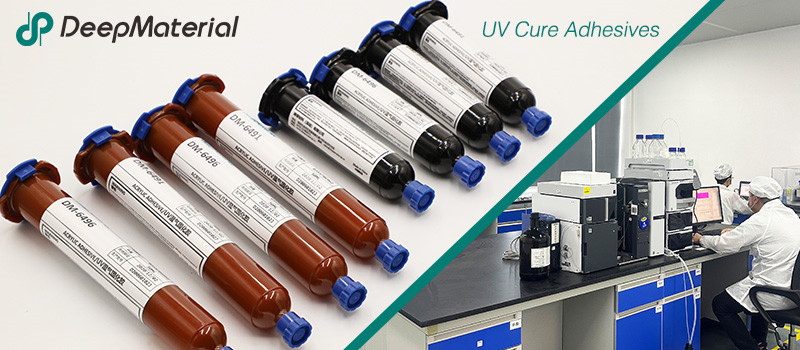
DeepMaterial
Based on the core technology of adhesives, DeepMaterial has developed adhesives for chip packaging and testing, circuit board level adhesives, and adhesives for electronic products. Based on adhesives, it has developed protective films, semiconductor fillers, and packaging materials for semiconductor wafer processing and chip packaging and testing. More…
UV Curing Adhesives
UV light cure have a number of benefits making them a popular choice among many product assembly and manufacturing applications. Many UV light cure adhesives can provide a nearly instantaneous bond to difficult substrates like glass and plastic. UV cure adhesives often require an accelerator or UV light for a bond to form.
Adhesive Blogs & News
The latest adhesive industry science and technology, Deepmaterial news, and market trends and forecasts.
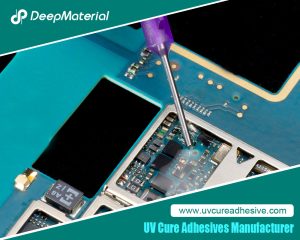
Technical Strategies for Balancing the Rapid Curing Property and Long Operating Time of UV Adhesives
Technical Strategies for Balancing the Rapid Curing Property and Long Operating Time of UV Adhesives UV adhesives have been widely used in many fields such as electronics, optics, and medicine due to their advantages of rapid curing, high bonding strength, and environmental protection. However, their rapid curing property also brings challenges in some application scenarios.
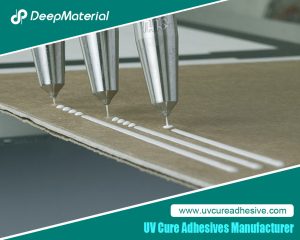
Biocompatibility of LED UV Glue Adhesive and Its Application Potential in Medical and Food Packaging Fields
Biocompatibility of LED UV Glue Adhesive and Its Application Potential in Medical and Food Packaging Fields LED UV glue adhesive has been widely applied in numerous fields due to its advantages such as rapid curing and easy operation. However, in fields with stringent safety requirements like medical and food packaging, its biocompatibility after curing
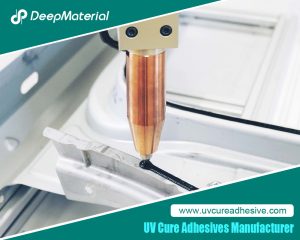
Exploring the Environmental Performance of UV Glue and Strategies for Optimizing Odor and VOC Content
Exploring the Environmental Performance of UV Glue and Strategies for Optimizing Odor and VOC Content UV glue, as an adhesive that achieves rapid curing through ultraviolet (UV) light irradiation, has been widely applied in numerous fields such as electronics, optics, healthcare, and automobiles, thanks to its advantages of fast curing speed, high bonding strength, and
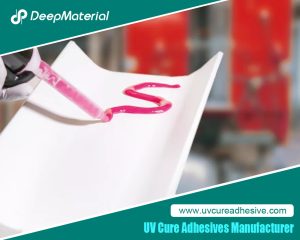
Compatibility Analysis and Countermeasures of LED UV Glue with Automated Production Equipment
Compatibility Analysis and Countermeasures of LED UV Glue with Automated Production Equipment LED UV glue has been widely used in modern manufacturing due to its advantages such as fast curing speed, high bonding strength, and environmental friendliness. However, in the automated production process, if there are problems with the adaptability between the glue and equipment

Influence of Viscosity and Thixotropy of Glue on the Quality of Glue Dots in the Dispensing Process and Solutions
Influence of Viscosity and Thixotropy of Glue on the Quality of Glue Dots in the Dispensing Process and Solutions The dispensing process is an important part of the application of LED UV glue adhesive, and the quality of this process directly affects the final performance of the product. The physical properties of the glue,
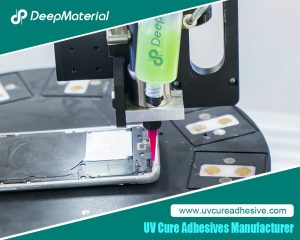
Aging Mechanism and Modification Strategies of LED UV Glue under Long-term Ultraviolet Irradiation
Aging Mechanism and Modification Strategies of LED UV Glue under Long-term Ultraviolet Irradiation LED UV glue, with its advantages of fast curing speed, high bonding strength, and environmental friendliness, has been widely used in fields such as optical device packaging, electronic assembly, and medical devices. However, in scenarios where it is exposed to ultraviolet environments

